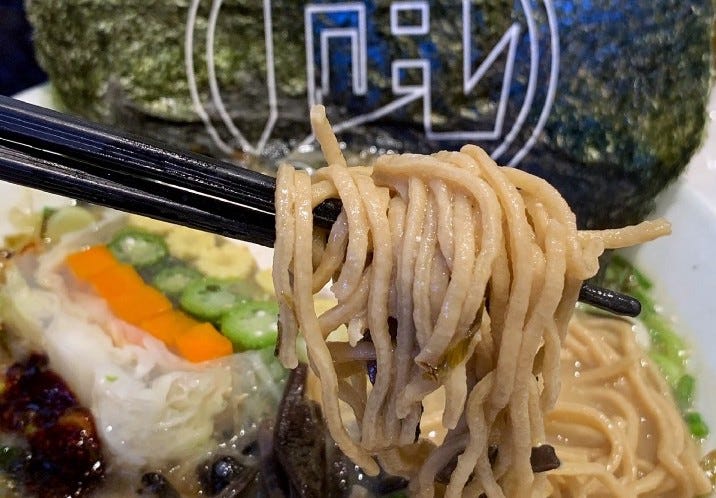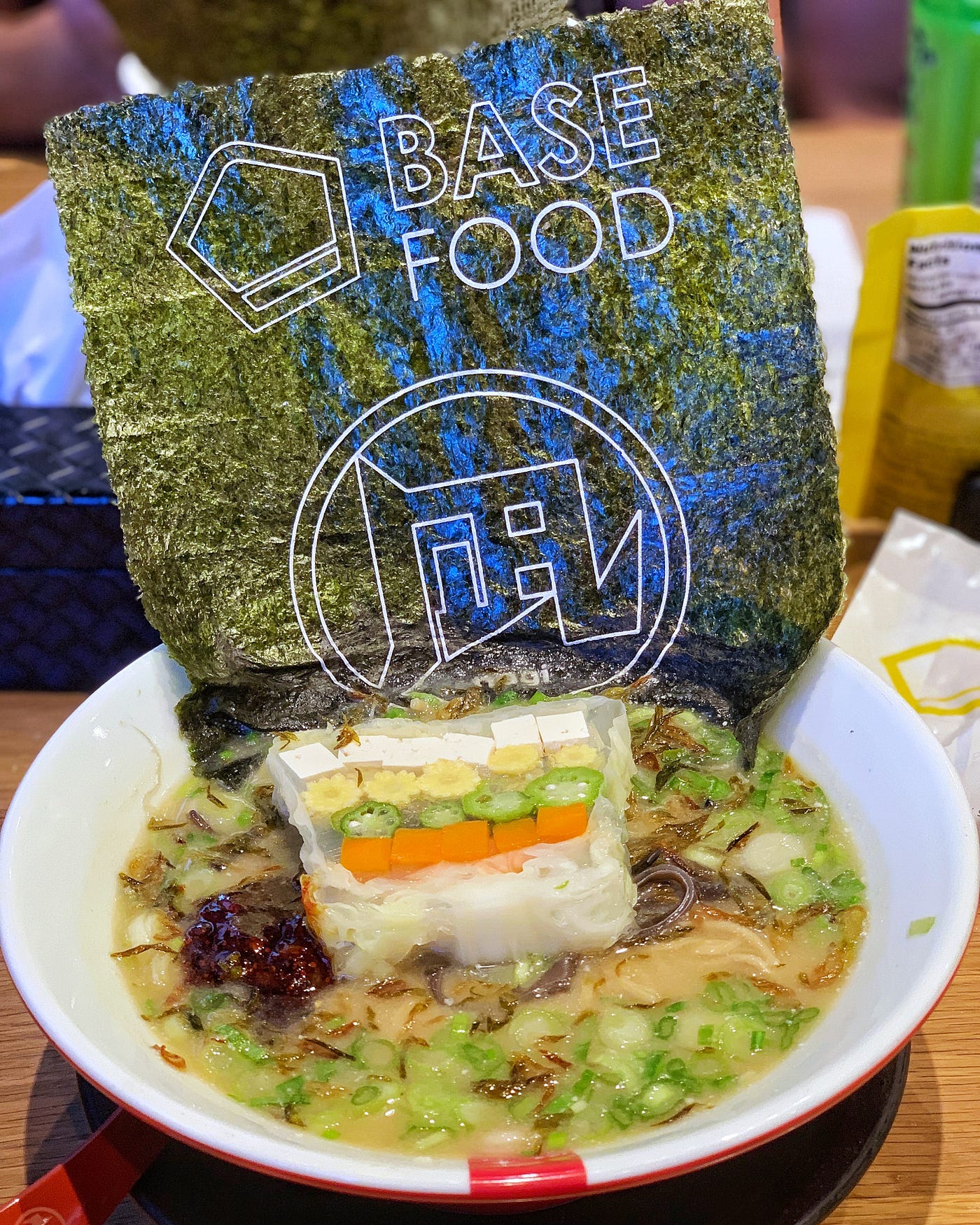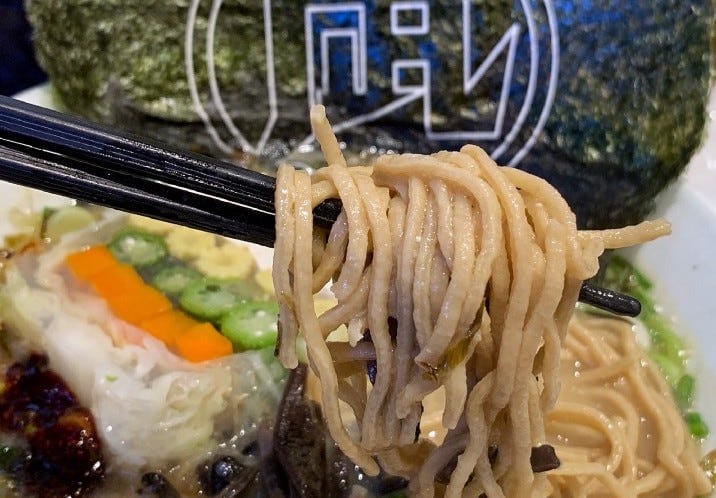
We live in a world where we have nutritionally complete liquid meals, genetically engineered yeast, animal-free dairy ice cream, fast-food beef without the beef, and eggs without the eggs. So when I got invited to try a new noodle that offers “everything you need,” including more protein than a serving of steak, I can’t say I was surprised. Soylent meets the Impossible Burger in ramen form — why not? It was only a matter of time.
I pitched the idea to my editor. “Impossible Soylent ramen sounds horrible,” she wrote back. “There’s nothing wrong with ramen in the first place, except for how delicious it is.”
She was right. The product sounded less like something I wanted to eat and more like another weird thing to come out of Silicon Valley. But pasta and noodles are my kryptonite, and despite the fact that they’re my favorite food, I have to avoid them, especially during lunch; if I eat them, I’m ready for an epic nap an hour later. Given those circumstances, I felt it was only fair to give the noodles a chance.
Those noodles would be Base Noodles. They were designed to be a restaurant-quality yet convenient nutrient-filled, high-protein alternative for busy people that can help reduce overall meat consumption. They’re primarily composed of whole wheat, rice bran, soy, eggs, sweet rice, seaweed, flaxseed oil, and vitamins. One serving contains 35% less carbs than the average fresh-refrigerated pasta, 8 grams of fiber, 29 grams of protein — more than half of the recommended daily value — and more than 30 different vitamins and minerals. The company that produces Base Noodles, the Tokyo-headquartered Base Food, claims that the product has a shelf life of 90 days in the refrigerator, and it cooks in two minutes flat.

For the past three years, the product has been available only in Japan. But Base Food spun off a U.S. subsidiary, Base Food U.S., and is readying a launch in the States.
I was excited to have a chance to try the noodles at a private tasting at Ramen Nagi’s Palo Alto location, the Japanese chain’s first in the U.S. Beginning on September 2, the popular Japanese ramen chain will offer the Base Veggie King Bowl, a miso-based vegetarian soup bowl with Base Noodles in place of traditional ramen, at its Tokyo and Northern California locations. For one month, the product will be available at Ramen Nagi’s Palo Alto and Santa Clara locations for $15.90.
I arrived late to the event, trying not to feel self-conscious as I ducked into a seat behind a bunch of suited Japanese business types. It was almost dinnertime, and I hadn’t had a real meal all day, something my growling stomach helped me realize after a steaming hot bowl was placed in front of me. I could barely see the noodles. They were buried under a vegetable terrine of okra, carrots, baby corn, and tofu that looked too pretty to eat. But the noodles were there, tiny in comparison to the mega-square of nori sticking out of the bowl.
“If you go to the [grocery] shelf, there’ll be this one thing in many noodles that gives you all of the nutritional benefits, like turmeric or seaweed. But we want to play with the combination of ingredients.”
I was taking pictures of the bowl, my stomach still growling, when a friendly husband-and-wife duo sitting across from me began making observations about the noodles.
“It’s denser than a traditional ramen noodle,” he remarked.
“This bowl definitely satisfies my ramen craving,” she added.
The market is flooded with low-carb noodle imitations, from zucchini noodles to konjac pasta. Base Food isn’t the only company reimagining wholesome eating by replacing “empty carb” noodles with a more nutritious alternative. It’s aware there are many dry pasta products that offer fewer carbs, higher fiber, and more protein by way of chickpeas, lentils, black beans, and other ingredients. Base Noodle makes the first noodle that combines many different ingredients into a fresh noodle product intended to replace ramen.
“If you go to the [grocery] shelf,” Michael Rosenzweig, Base Food U.S.’s COO, told me, “there’ll be this one thing in many noodles that gives you all of the nutritional benefits, like turmeric or seaweed. But we want to play with the combination of ingredients.”
This noodle, which will be available for purchase online next month, has actually been around since 2016, when Shun Hashimoto, a tech worker who worked grueling hours and depended on convenience foods, worried about whether he was getting proper daily nutrition. (It’s an origin story that bears striking similarities to Soylent’s.) Today, the company has raised more than $3.7 million from investors that include Rakuten Ventures, Global Brain, and X Tech Ventures, offering two core products for the Japanese market: the noodles and a bread product with a similar nutritional profile.
According to Base Foods, Hashimoto is trying to eliminate the trade-off between healthy and delicious. “His mission is that it shouldn’t be a luxury for people to be healthy — it should just be a normal facet of life — so his long-term vision was to put a dent in this,” Rosenzweig told me. “Healthy eating should be something that’s natural, not difficult.”
The noodles have attracted a following from a diverse set of people: athletes looking for nutrient-dense food, tech employees looking for convenience, ramen-obsessed people looking for the next big thing, and people who are concerned about eating better for the benefit of the environment.
“Maybe the hacking of a noodle isn’t such an eye-roller after all.”
“What’s exciting about the market now, especially in the Bay Area, is that there’s an increasing number of flexitarians who don’t necessarily want to forego the products that they’ve always enjoyed,” Rosenzweig said, adding that the company is working with a warehouse that runs on 100% renewable energy. “It feels very familiar, but at the same time, if you’re worried about meat consumption, it’s a very easy substitute.”
But I still wondered whether the concept was necessary. Does everything — even a noodle — need to be hacked? With all the focus on food being tackled with engineering solutions, and with the creation of yet another food that is designed to meet all our needs, are we taking a step toward the end of real food as we know it?

I eyed the noodles as I raised them out of the bowl with my chopsticks. While they had the cut of cooked ramen noodles, they bore a jaggedness about them and tasted somewhat coarse. A bit like a whole-grain noodle, almost soba-like. While they didn’t have quite as much bounce as a traditional ramen noodle, they were still chewy — more in a whole-grain way, and less in an al dente pasta way.
Were they perfect? Not by any means. But they were far more satisfying than other low-carb noodle products I’d ever tried, and I’ve tried my fair share of them (can we all agree that a zucchini spiral or a shirataki noodle tastes nothing like a noodle?). Best of all, I didn’t leave the event with a food coma. I actually felt energetic (although finally eating a meal might have had something to do with that) as well as surprisingly alert.
“Maybe they’re onto something,” I admitted to myself. “Maybe the hacking of a noodle isn’t such an eye-roller after all.”
On the way out, the event organizers sent everyone home with jarred tomato sauce and a packet of noodles to prepare at home. The true test: I’ll have them for lunch tomorrow and see if I still need a nap.







